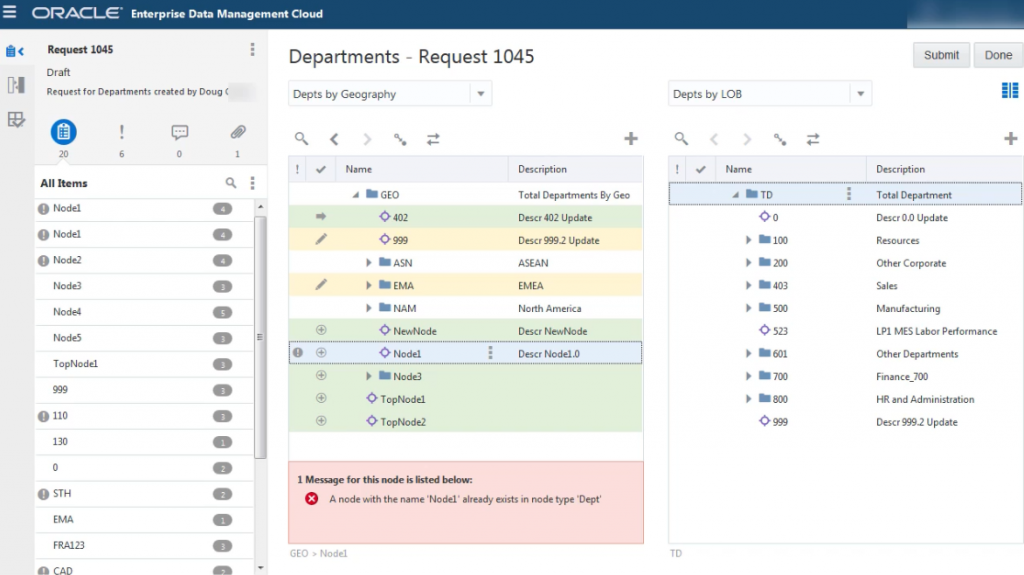Business operations become more complex as companies grow. Management processes get increasingly cumbersome, while organizations’ ability to respond to market changes in a timely fashion often stumbles.
To be able to keep abreast the competition in an increasingly crowded marketplace, businesses integrate planning, strategy, execution, and performance analysis. To hit all these targets, companies in the digital age need a robust enterprise performance management (EPM) solution to get their ducks in a row.
Enterprise performance management, defined
How to understand what an EPM solution is and how companies can leverage it to maximize business potential and growth? In the simplest term, EPM helps businesses align their strategies to their plans and eventually oversee execution of said plan. It allows companies to carry out management-cycle processes such as:
- Settings of goal and target, budgeting, forecasting, modeling.
- Refining business plans and processes.
- Results and data consolidation.
- Reporting .
- Performance analysis.
Businesses typically execute these processes periodically: quarterly, annually, or even more infrequently. However, regardless of the frequency, the primary objective of the EPM is making sure that the business goals are well communicated and understood by all the relevant stakeholders in the organization, and sufficient budgets are allocated towards achieving the said goals. Beyond that, EPM also provides the platform to get all the different business units in an organization aligned to the common objective.

Strategic alignment, however, is not a one-off exercise – nor, a periodic one. As such, EPM software will continuously revisit the goals, plans, and results to ensure that business strategies are not outdated and, therefore, adequately reflect the latest market conditions. EPM also monitors and manages key performance indicators, as well as provides leaders from different departments with the most recent information regularly. This way, managers can promptly intervene when a particular department is not hitting targets (KPIs) and make appropriate adjustments.
Business benefits of EPM
Most often, different business units in an enterprise use different data sets, assumptions, and estimates to derive their own projections and outlook. For example, the sales team may have used one set of data to forecast future demands, different from the finance department’s data, which was based on projected P&L. Discrepancies in numbers, and the conclusions regarding performance, therefore may cause friction between the departments or worse, strategic misalignments.
Sales performance data and forecasts are critical inputs for financial planning and analysis, as well as for operational decisions elsewhere that involve incentives, budgets, inventory, and talent acquisitions. In short, data does not exist in isolation, or silos, although naturally different “slices” of the same data set will be used by different functions.
By deploying an organization-wide EPM platform, companies are effectively collapsing informational data silos, while connecting strategic, financial, and operational goals. That makes planning seamless for sales, finance, human resources, supply chain, operations and so on.
When operating from a single source of truth, businesses can increase forecasting frequency and improve the efficiency of said forecasts, while also reducing the triple burden of planning, budgeting, and reporting. Furthermore, with the integration of emerging technologies such as AI and ML, modern EPM software is also closing the gap between analysis, insight, and action, whereby routine tasks can be automated and the likelihood of errors due to silo-ed data all but eliminated.
Picking the right EPM solution
Understandably, choosing an ideal EPM solution from a crowded pool of vendors could be a challenging task for any business leader today. In addition to finding the right tool, multiple other factors such as scalability, price, interoperability, and integration capability must be taken into account. Thus, Tech Wire Asia has picked the top two EPM solution that businesses should consider, to optimize their analytical capacity and yield insight to drive real, transformative changes. To boost corporate performance, read on.
JEDOX
Whether you are a large corporation or an SME, Jedox EPM software makes planning and EPM processes virtually seamless, providing reliable data, insights, continuous foresights and guidance to everyone across the organization. That seamlessness is created by the removal of data “silos”, so every department’s working from the same information.

The software comes packed with useful features such as self-service budgeting, planning, and forecasting combined with intuitive analytics and BI dashboards, in an integrated software platform.
Jedox’s powerful modeling engine allows companies to customize their enterprise performance management solution so it’s suitable to their unique structure & business processes. All the integrated collaboration features are also mobile-enabled, via the Jedox Mobile app, which creates an avenue for increased engagement and productivity.
Companies can leverage smart decision support and automation to enhance business planning and power more intelligent analysis, thanks to Jedox AIssisted planning that uses AI technology. With flexible deployment options (cloud or on-premise) and over 50 out-of-the-box connectors to enterprise software and leading data sources, Jedox will implement seamlessly into any platform.
ORACLE EPM
There are very few solution providers that come close to matching the features of Jedox’s offering, but one of them is Oracle’s EPM platform. Named by Gartner as a leader for Cloud Financial Planning and Analysis Solutions, Oracle offers top of the line EPM solutions for businesses of every size as well as those presenting unique challenges.

There are four different suites available for companies to choose from – Connected Planning, Comprehensive Financial Close, Narrative Reporting, and Enterprise Data Management – which include planning frameworks, business-user allocation management, and just about any metric, thanks to user-defined data mapping.
Much like other Oracle products, the company’s EPM software is a simple to use, easy to maintain and represents a solution that comes with “best practice” out-of-the-box. That means companies can get up and start running in no time. The Oracle platform can be configured and upgraded to allow users to tailor it according to highly-specific company or industry requirements. Furthermore, the solution’s intuitive business wizards enable users to continue to tweak and evolve planning processes, so reflecting the changing business environment.
Generally considered a benchmark for financial consolidation products, Oracle’s EPM suites can be deployed on private, public or hybrid clouds, as well as on-premise. Depending on the individual CAPEX or OPEX approach, the choice is yours.
Source: techwireasia










